For your lawn to maintain its lush appearance and curb appeal, you need to care for all its residents, including your trees. Healthy trees can do more than contribute to the beauty of your lawn. They can also provide shade, a buffer from harsh winds, as well as privacy from curious eyes.
To keep your trees safe from pests, diseases, and harsh weather conditions, your trees need tender loving care. Two important aspects of tree care are proper fertilization and soil aeration.
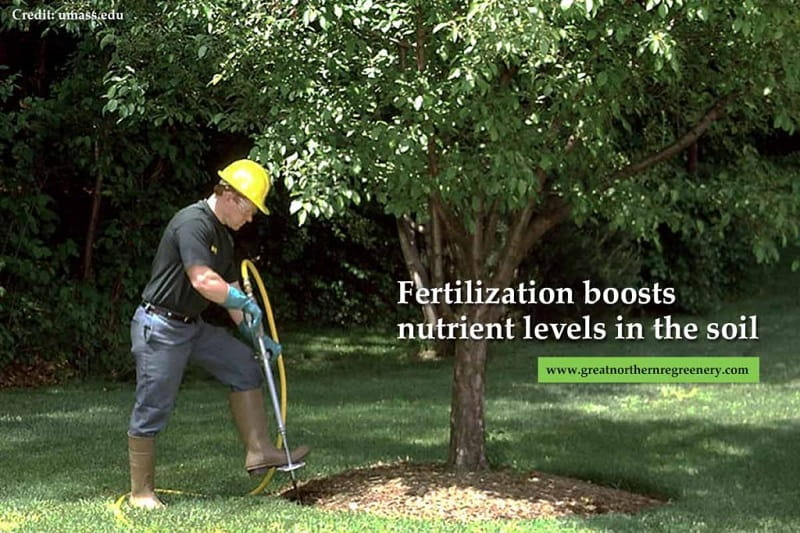
How Do Your Trees Benefit From Fertilization?
Trees in forests have continuous access to natural fertilizers provided by the abundance of decaying plant and animal matter. However, those in the more controlled environments of urbanized areas are planted in soil that may not have the proper amount of nutrients they need. This makes manual fertilizing necessary.
In addition to carbon, hydrogen, and oxygen found in air and water, trees need other nutrients found in the soil. For trees to thrive, the following nutrients should be present in the dirt:
- Macronutrients – The following primary macronutrients should be available to trees in large doses:
- Nitrogen
- Phosphorous
- Potassium
- Secondary Nutrients – In smaller quantities, plants need:
- Calcium
- Magnesium
- Sulphur
- Micronutrients – Micronutrients are also necessary for healthy trees, but only in trace amounts. These include (but are not limited to):
- Boron
- Copper
- Chlorine
- Iron
- Manganese
- Molybdenum
- Zinc
It’s vital for these nutrients to be in the soil in the right quantities. Too much or too little can both affect the pH levels of the dirt and cause discolouration of leaves and reduced growth. The amount needed for each substance depends on the current levels present in your soil. A professional arborist can test the soil quality of your trees to determine which fertilizer is best for your lawn.
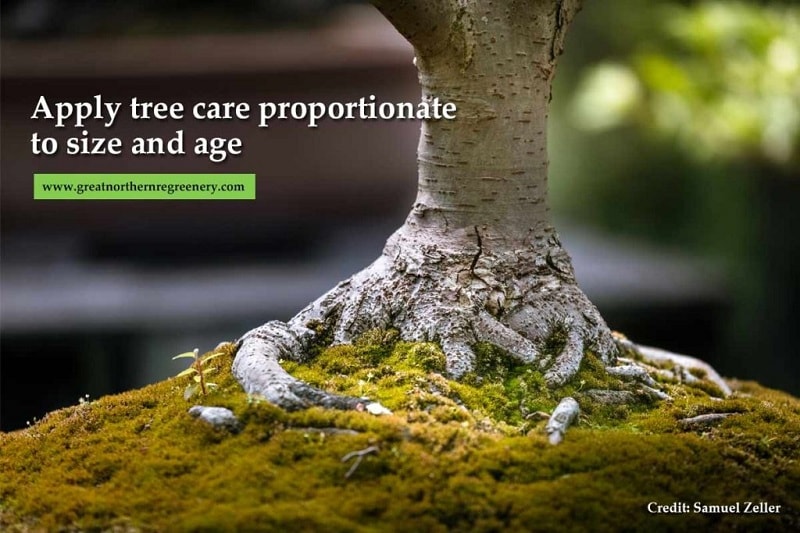
When to Fertilize Trees
One common tree care mistake for homeowners is timing the fertilization process ill. Knowing when to fertilize your trees is equally necessary to understand what to feed them. The interval between each fertilization period largely depends on the age of the tree.
- Saplings are quite sensitive and can easily be burned by high nitrogen levels. These need only minimal amounts of quick-release fertilizer.
- Young, developing trees need fertilizer to facilitate rapid growth. They are less sensitive and can be given regular fertilizers twice a year.
- Mature trees have more complicated root systems spreading over a wider area, enabling them to gather nutrients more efficiently. Fertilizing once a year is enough to maintain their health without encouraging excess vegetative growth.
Fertilizing is best done in spring or autumn. With spring fertilization, younger trees can soak up more nitrogen and supplement the nutrients they had stored before the cold weather set in. Late fall fertilization, after the tree’s active growth has slowed, can promote disease resistance and root development during the cold winter months while making nutrients immediately available when the spring returns.
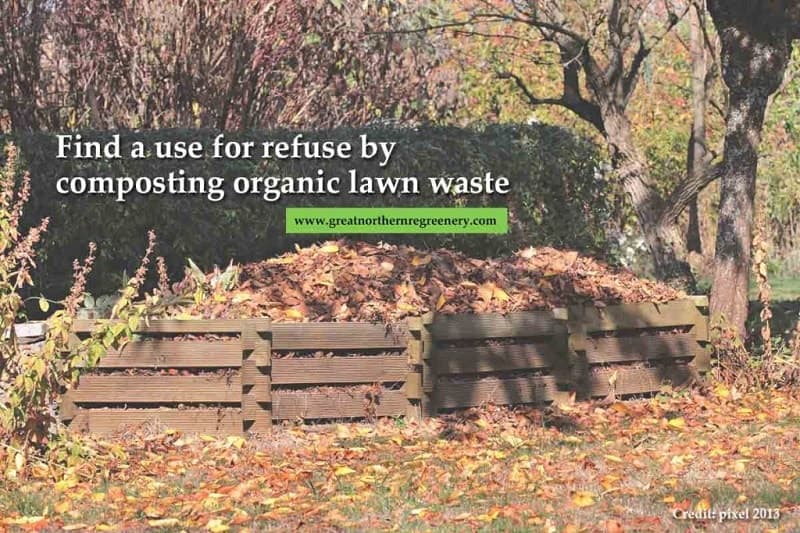
Kinds of Fertilizers
- Organic – Organic fertilizer is made of non-composted materials from plants and animals. It has a slow nutrient release rate due to the amount of time needed for organic matter to decompose. It poses the least risk to both the tree and the environment.
- Inorganic – Inorganic fertilizer is an affordable means of fertilizing. Trees can absorb this type significantly faster than organic ones. Note that inorganic fertilizers do pose a few risks.
- Compost – Compost is comprised of plant matter allowed to decay over time and is the closest to the natural form of fertilizer available in forests. The decomposition process slows down the absorption rate, but (like organic fertilizers) compost is safe for trees.
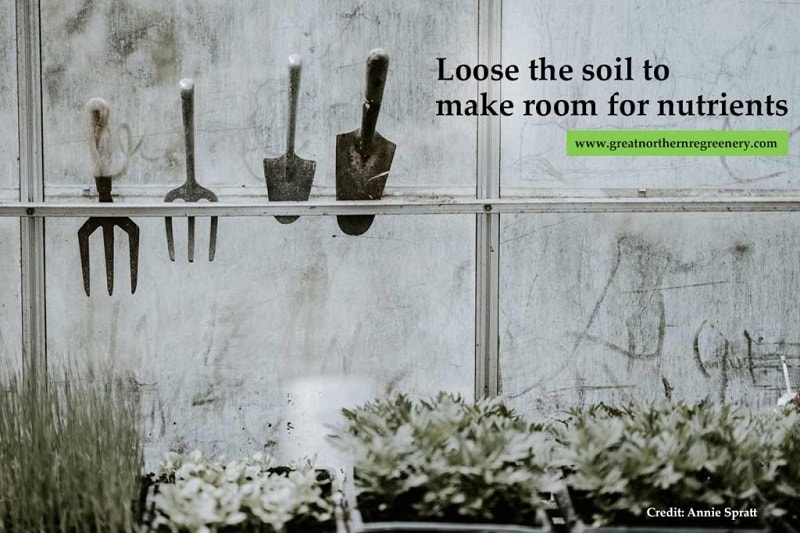
How Do Your Trees Benefit From Soil Aeration?
While fertilizer adds the much-needed nutrients to the soil, aeration promotes nutrient absorption and root growth through the following means:
- Increased pore area – In nature, the ground is comprised of at least 50% pore space compared to the 10% in urban areas. Aeration fixes this, giving tree roots more breathing room.
- Improved nutrient levels – Compacted soil makes it difficult for beneficial microorganisms to thrive and for trees to get the nutrients they need from the air or water. Soil aeration solves this by creating air pockets (or macropores) in the soil. These air pockets allow the roots of trees to breathe and gain better access to nutrients and improve root growth.
- Improved water supply – Your trees can be profoundly affected by drought. However, even in normal weather conditions, trees can have difficulty accessing groundwater. If the soil hardens, little to no water will penetrate to the roots of your trees. By breaking up the earth, aeration creates passageways for water to pass.
- Enhanced resistance to pests and diseases – Trees with unhindered access to water and nutrients grow healthier and more vibrant. They can better resist pests and fend off diseases.
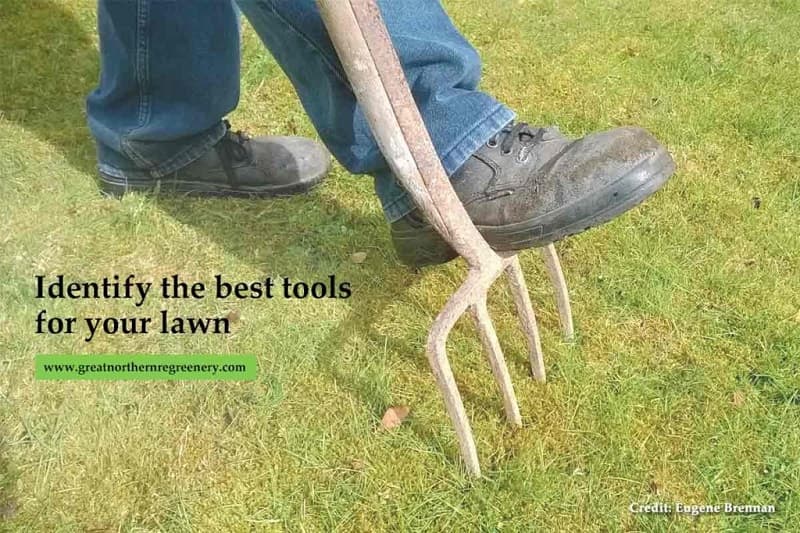
Methods of Aeration
Aeration involves two main tools:
- Spike Aerator – This involves puncturing holes into the soil with a spiked roller, pitchfork, or tines to create holes in the soil.
- Plug Aerator – With plug (or core) aerations, a machine with hollow tines is used to remove “plugs” of soil from a lawn. Given the ability to create holes as large as ¾ of an inch, this is considered to be the more effective method.
To promote the optimal health of your trees, aerate your soil at least twice a year. Like fertilization, aeration is best done during spring and fall. In spring, aeration takes advantage of early spring growth. This way, grass and any affected roots can heal properly. In fall, aeration loosens the soil before the winter sets in, promoting better nutrient absorption (and rapid root growth for young trees) come spring.
If you want to keep your tree from experiencing premature decline and an untimely death maintain the health of surrounding soil by properly aerating and fertilizing at the most opportune time. For the best results, hire professional tree care services.
Contact Great Northern Regreenery for professional assistance in the York Region and surrounding areas. Our services include aeration and fertilization, tree pruning, tree pest control, and stump grinding. We are committed to the safety of both plants and residents alike. Call us for a free estimate at (905) 775-7444.





